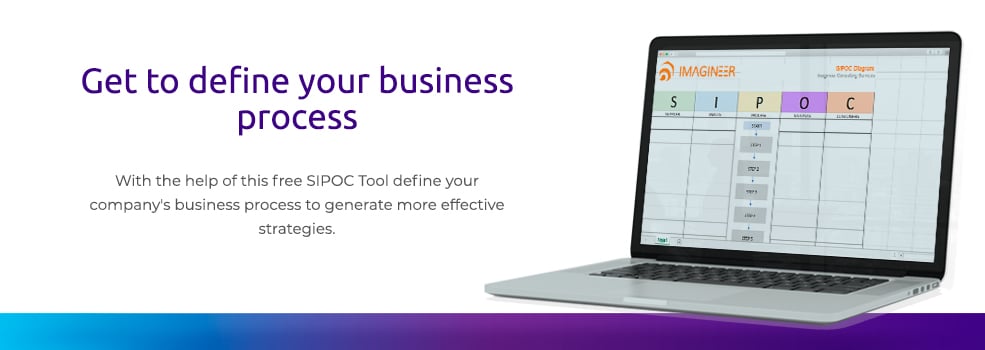How Value Stream Mapping drives customer experience
A value stream map (VSM) is a powerful tool used in continuous improvement methodologies such as Lean and Six Sigma to visualize and analyze the flow...
Have you ever heard of the concept of continuous improvement? We are talking about a work philosophy focused on a constant questioning of what could be going wrong and how it could be improved. Commonly, these kinds of methodologies are seen in manufacturing due to the industrial revolutions, however, nowadays service companies predominate and the easiest thing to do is to look for the relationship space with which you could leverage existing knowledge and adapt it. For example, the Customer Journey Map is a visual representation of the decision process a customer goes through when they want to buy a service, and by understanding it in this way, we can look for methodologies focused on process improvement and make the necessary adjustments to apply it to your business.
In this blog we will introduce you to the Six Sigma DMAIC methodology and show you how it is possible to adapt it to improve your service and thus improve the experience your customers perceive.
Related Article: Customer Journey Map: What it is and how to create one?
Index
What is standardisation and why apply it?
Before we start, it is necessary to talk about a basic concept in order to be able to carry out this type of project. We cannot improve something if we cannot measure it, but we cannot measure anything just for the sake of it. If we have a well-defined process, we can identify variables that give me important information and for this I need a standard. Think of it this way, if you are just starting to experiment in the kitchen, you will probably look for a recipe with ingredients and measurements. Over time you will know how much to add of each ingredient until you get the taste you like, but if you have never seen the steps or measured the amounts, you will hardly know how to improve your dish.
Standardisation is a way of ensuring that activities are always done in the same way and in the same order, thus always producing the same results. It takes time to achieve, but you can start by documenting the activities, step by step, from the beginning of the process until it is finished. Although this first step is simple, it has some important benefits:
A simple way to document this standardisation is through the creation of a Process Map or Flowchart.
Article: How to create a process map?

The Customer Journey Map helps you understand how your Buyer Persona interacts with your business and how their experience can be affected. In this sense, the Customer Journey Map is to a customer-centric service company what a Flow Chart is to a product-centric manufacturing company. Both methods allow you to visualize the path travelled by their respective focus of interest. For now, think that standardizing a Customer Journey Map will help you ensure that your customers always receive the best possible service. There is now a method that will guide you in this task.
Six Sigma is a work philosophy that companies use to search for and reduce errors, improving the quality of their products and services and reducing their operating costs. It is a methodology that seeks to reduce variability, taking standardisation to a higher level by means of statistics. Sigma is the symbol used to refer to standard deviation (a parameter that quantifies variation) and the objective of this philosophy is to try to take processes to six sigmas, which translates as an accuracy of 99.9997%, or 3.4 errors per million opportunities.
How is this possible? Well, by using tools to perform analysis and find these defects. One example of such tools is the methodology known as DMAIC.

This name is the acronym for the initials of its stages. It is a continuous improvement methodology, which means that it never ends. Once you reach the final stage, you go back to the initial stage, ensuring that you are always looking for opportunities for improvement. This name is the acronym for the initials of its stages. It is a continuous improvement methodology, which means that it never ends. Once you reach the final stage, you go back to the initial stage, ensuring that you are always looking for opportunities for improvement.
Once this methodology is applied and the control stage is reached, the definition stage must be restarted. Ideally, always maintain a mindset of diagnosing problems, designing solutions, validating them and re-diagnosing.
If you want more details about the application of this methodology, you can check this blog: Applying the DMAIC Steps to Process Improvement Projects

Although a Buyer Persona has a specific Customer Journey, it is known that this is a generalization, each customer lives their own experiences. Earlier we made an analogy between the Customer Journey Map and a Flowchart, however, there is a small footnote and that is that a product may be the output of a production process, but a customer is not the output of a service process, the output is the service itself (purchase, transport, medical or financial care, etc.). For this reason, the objective of applying DMAIC in this type of company is NOT to improve the customer experience, it is an indicator to measure the quality of the process and not the outcome of the process.
I mention this because the important thing is to establish an objective for the application of the methodology. Being a company, whose success depends on the customer experience, you must ensure that it is always positive and for this you need to analyze your Customer Journey Map, define what problems exist in any of the stages, measure a variable that helps you to quantify this problem, analyze the possible causes and thus design a more friendly process for your Buyer Persona. If you improve the quality of your service, your customer will notice it and their satisfaction will increase.
Here are at least five reasons why you should not hesitate to implement DMAIC to improve your Customer Journey Map. I remind you that this methodology focuses on processes and therefore you should define objectives focused on improving service.
You will certainly find tools and methods on the internet to analyse your Customer Journey Map. My recommendation is that you inform yourself and get to know as many tools as you can. You may end up applying several of them. But I also recommend that you look for a methodology, a step-by-step guide on how to use these tools to always achieve a positive result. DMAIC is a good example to start with, on the internet you will find use cases for both manufacturing and services, and it will give you results if you understand your service as a process. Moreover, it will introduce in your business the philosophy of constantly seeking continuous improvement, resulting in greater customer satisfaction. And if you haven't mapped your Customer Journey yet, what are you waiting for? The only way to improve something is to measure it, and you can only measure what you know about it.


A value stream map (VSM) is a powerful tool used in continuous improvement methodologies such as Lean and Six Sigma to visualize and analyze the flow...

HubSpot Service, a customer service management software that allows you to improve your customer service by unifying all your teams into one powerful...

How much should we learn from other disciplines? David Epstein's book"Rank: How Generalists Succeed in a Specialized World"explains the following:...